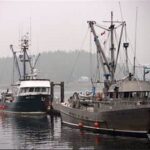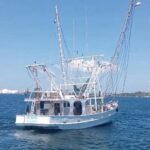Tag Archives: American lobster
$5.4 million to further innovative research and outreach in support of the lobster industry and fishing communities
 The American lobster fishery and American lobster fishery in the Gulf of Maine, Georges Bank and southern New England continue to face uncertainties due to environmental and socio-economic changes. Such challenges underscore the need for continued research and engagement to not only understand the fishery’s current state but also prepare for its future state. Since 2019, Sea Grant’s American Lobster Initiative has addressed critical knowledge gaps about the American lobster and its fishery facing a dynamic and changing environment. The Initiative supports a regional extension program in the Northeast and a national research competition. Fifteen emerging research projects were selected in 2023 and 2024 for $4.6 million in federal funding by the NOAA National Sea Grant College Program. The projects were chosen through a competitive process, including review by subject matter experts, and require at least a 50-percent match in non-federal funds. more, >>CLICK TO READ<< 10:03
The American lobster fishery and American lobster fishery in the Gulf of Maine, Georges Bank and southern New England continue to face uncertainties due to environmental and socio-economic changes. Such challenges underscore the need for continued research and engagement to not only understand the fishery’s current state but also prepare for its future state. Since 2019, Sea Grant’s American Lobster Initiative has addressed critical knowledge gaps about the American lobster and its fishery facing a dynamic and changing environment. The Initiative supports a regional extension program in the Northeast and a national research competition. Fifteen emerging research projects were selected in 2023 and 2024 for $4.6 million in federal funding by the NOAA National Sea Grant College Program. The projects were chosen through a competitive process, including review by subject matter experts, and require at least a 50-percent match in non-federal funds. more, >>CLICK TO READ<< 10:03
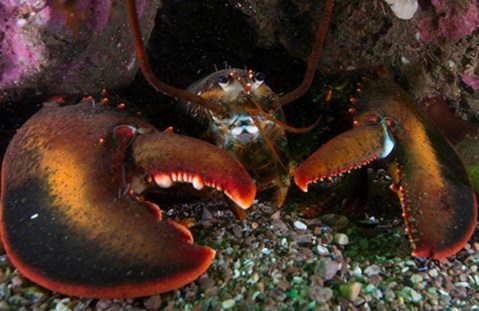
American lobster population, habitat preferences shifting, study finds
American lobsters along Maine’s coast have relocated to new habitats, while the population simultaneously shrunk in abundance and grew older, according to a new study by University of Maine researchers. For decades, the vast majority of adult lobsters resided in majority of adult lobsters. This knowledge helped inform longtime conservation efforts and regulations within the more than $740 million fishery. A team of UMaine scientists, however, found that from 1995-2021, occupancy of boulder habitats dropped 60%. Meanwhile, the number of lobsters residing in sediment or featureless ledge habitats, both of which have little to no geological features to use as shelters, increased 633% and 280%, respectively. Lobster population density across all types of habitats declined too, meaning they are fewer in number and their populations are more spread out. more, >>CXLICK TO READ<< 16:20
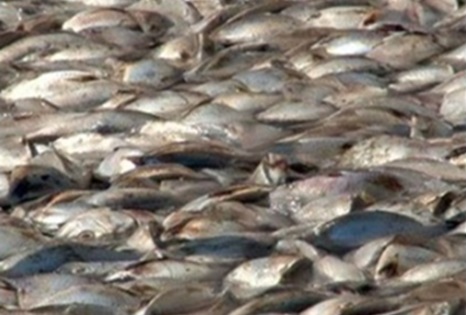
New Rutgers Study Confirms Hypoxic Event Last Summer off the New Jersey Coast by Jim Lovgren
In a scientific report released in December 2023 by Associate Professor Grace Saba, and Professor Josh Kohut using underwater robots, called “Gliders” to track ocean water quality, specifically, oxygen concentrations and PH levels, the researchers discovered that large areas of the New York Bight suffered a hypoxic event last summer. The study suggests that any of a number of factors could have caused these conditions, including a change in normal ocean stratification, increased input of nutrients which increase phytoplankton production, increased sea temperatures, and a few more. Conveniently missing from the possible causes of this hypoxic event is the impact of the offshore wind research vessels that have been extensively using high powered sonar and seismic devises throughout the New York bight area for over a year now. Also ignored was any outreach to the scallop fishermen along the coast who have been reporting unusual amounts of “clappers”, which are dead scallops, in their tows. In an article posted in the spring of 2023 in Fisherynation.com, “Is the Great Fishkill of 1976 About to be Repeated?“, I suggested that the New York bight could see an environmental catastrophe that could rival or surpass the great fish kill of 1976 and would be caused by the decomposing bodies of the dead sea creatures killed by the seismic and Sonar assault on the ocean bottom by offshore wind research vessels. Links, more, >>click to read<< 19:46
Lobster Market Outlook, Industry Size, Growth Factors, Investment Opportunity 2024-2032
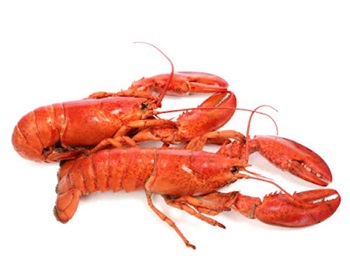 IMARC Group, a leading market research company, has recently released a report titled “Lobster Market Report by Species (American Lobster, Spiny Lobster, Rock Lobster, European Lobster), Weight (0.5 – 0.75 lbs, 0.76 – 3.0 lbs, Over 3 lbs), Product Type (Whole Lobster, Lobster Tail, Lobster Meat, Lobster Claw), Distribution Channel (Food Service, Retail), and Region 2024-2032.”The study provides a detailed analysis of the industry, including the global lobster market share, size, trends, and growth forecasts. The report also includes competitor and regional analysis and highlights the latest advancements in the market. How Big is the Lobster Market? more, >>click to read<< 10:36
IMARC Group, a leading market research company, has recently released a report titled “Lobster Market Report by Species (American Lobster, Spiny Lobster, Rock Lobster, European Lobster), Weight (0.5 – 0.75 lbs, 0.76 – 3.0 lbs, Over 3 lbs), Product Type (Whole Lobster, Lobster Tail, Lobster Meat, Lobster Claw), Distribution Channel (Food Service, Retail), and Region 2024-2032.”The study provides a detailed analysis of the industry, including the global lobster market share, size, trends, and growth forecasts. The report also includes competitor and regional analysis and highlights the latest advancements in the market. How Big is the Lobster Market? more, >>click to read<< 10:36
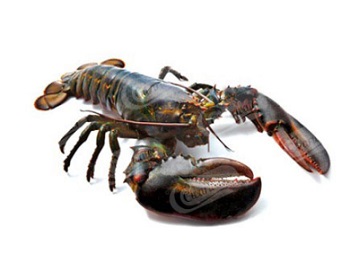
ASMFC Public Hearing on American Lobster Draft Addendum XXVII
The Atlantic coastal states of Maine through New York have scheduled hearings to gather public input on Draft Addendum XXVII to Amendment 3 to the Interstate Fishery Management Plan for American Lobster, which considers measures to increase protection of the Gulf of Maine/Georges Bank (GOM/GBK) spawning stock. Some hearings will be conducted in-person, and some hearings will be conducted via webinar. Additional details on participating in the webinars can be found later in this release. Massachusetts Virtual Hearing on March 15, 6PM The public hearing details are as follows: >Click to read< 12:17
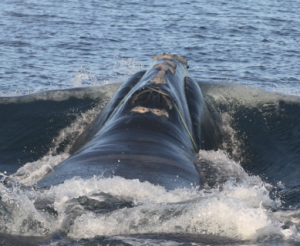
Save Right Whales from Radical Environmentalists Who Exploit Them
Americans agree with protecting the endangered Northern Atlantic right whale. But true conservation efforts don’t necessitate displacing lobstermen and recreational anglers in the process. With fewer than 350 whales left, ambulance-chasing opportunists masquerading as conservationists conveniently swoop in on the whale’s behalf only to leave economic —and environmental—destruction in their paths. This endangered whale requires protection from radical environmentalists who exploit them. Preservationists purporting to care about its well-being, however, distort the threats posed to the whales. >click to read< 08:06

16 Types of Lobster from Around the World and How to Cook Them
American lobster may feel like an obvious choice, especially in a country that puts the meaty variety on a pedestal. However, the world of lobster is incredibly diverse. Different shapes, colors, sizes, and pokey features barely scratch the surface. Ocean waters accommodate cold-water lobsters, warm-water lobsters, and acknowledge nearby lobster relatives that don’t live in saltwater at all. All are unique, immensely delicious, and tied to boundless culinary creations. Here are 16 different types of lobsters (and related crustaceans) with assorted tips on how to cook each prized shellfish. >click to read< 12:41
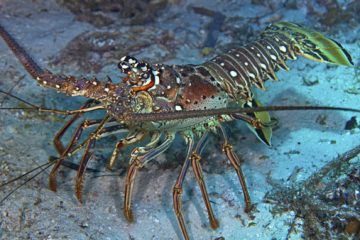
Spiny lobster season kicks off amid an unexplained population drop
The Caribbean spiny lobster commercial fishery in Florida average more than 5 million pounds per year,,, Valued at more than $40 million, the spiny lobster fishery is the second most lucrative commercial fishery in the state, behind shrimp.,, Since the 1990s, the population of the Caribbean spiny lobster has decreased 20%, which matters, not only to fisheries and spiny lobsters, but also to the entire food chain of Florida’s waters. “They’re a main food item for every other organism in the Florida Keys. Everything wants to eat little lobsters from snapper, grouper, even some herons. Matthews said while the American lobster is a “mean, nasty animal” not afraid to “fight to the death,” the Caribbean spiny lobsters are just the opposite. “They love to be in groups. They defend each other, and they are very social animals. >click to read< 12:04
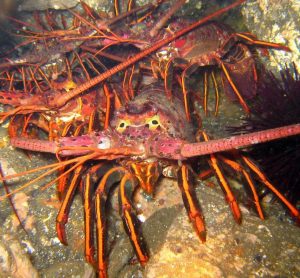
European Union is dropping tariffs on American lobster
President Donald Trump has signed a proclamation that finalizes an agreement with the European Union to eliminate tariffs on live and frozen lobster from the United States. In 2017, a trade agreement eliminated tariffs on live lobsters from Canada and slowly reduced and eliminated tariffs of frozen and processed Canadian lobster. At the same time, American lobster exports faced tariffs as high as 30% in the European Union. The new agreement will reduce tariffs on live and frozen U.S. lobsters to 0%, retroactive to Aug. 1. Video, >click to read< 11:24

Trade Agreement Reached! European Union to eliminate tariffs on American lobsters
The United States and the European Union have reached an agreement to eliminate tariffs on American lobster, federal officials announced Friday, which could boost exports for Maine’s industry hit hard by trade wars and, more recently, the coronavirus pandemic. Reducing the tariffs has been a priority as Maine lobstermen have been at a disadvantage compared to their Canadian counterparts with respect to exports to the E.U. since the E.U. and Canada signed a trade agreement in 2018. United States Trade Representative Robert Lighthizer and European Union Trade Commissioner Phil Hogan jointly announced the agreement Friday afternoon. >click to read< 15:10
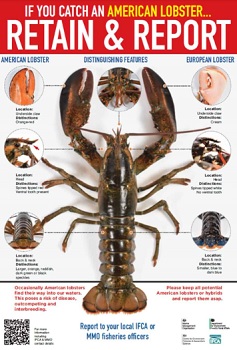
Retain and report American lobsters
American lobsters have been imported to the UK since the late 1950s for consumption in restaurants and homes. In 2015, 1744 tonnes were imported, worth £15.75 million. American lobsters tend to grow to larger sizes than European lobster, have a larger dietary range, are more tolerant of different habitats, are more aggressive and produce more eggs than European lobsters. This means they are at a competitive advantage over the native species. American lobsters might also carry the bacterial disease, Gaffkaemia, or Epizootic Shell Disease. Transferring these diseases to native stocks could result in major economic losses to the fishing industry. more, >click to read< 08:25

Warming waters, local differences in oceanography affect Gulf of Maine lobster population
Two new studies published by University of Maine scientists are putting a long-standing survey of the American lobster’s earliest life stages to its most rigorous test yet as an early warning system for trends in New England’s iconic fishery. The studies point to the role of a warming ocean and local differences in oceanography in the rise and fall of lobster populations along the coast from southern New England to Atlantic Canada. >click to read< 12:36
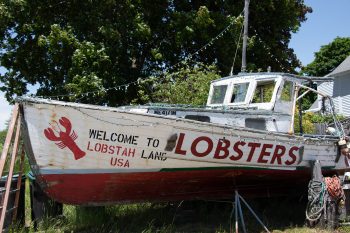
Sea Grant awards $2 million to advance understanding of American lobster, support industry
Sea Grant announced new funding today for research aimed at understanding physical and chemical changes affecting American lobster (Homarus americanus) in the Gulf of Maine as well as a regional lobster extension program. Collectively, the research projects and regional extension program comprise the Sea Grant American Lobster Initiative. The seven research projects were chosen through a competitive processes that included review by subject matter experts. The research competition solicited proposals aimed at addressing one or more of the following priorities: >click to read< 10:21

Impending whale protections worry fishermen
With the majority of American lobsters caught in Maine, the state’s lobster fishermen could bear the brunt of changes in federal fishery regulations to save the endangered right whale. At the March 1 Fisherman’s Forum update on the threat of extinction for the North Atlantic right whale, it became clear regulators believe changes to fishing gear will be announced sometime this year. Right whale presentation – National Oceanic and Atmospheric Administration official Mike Asaro explained that most of the remaining 450 North Atlantic right whales are male, with a population of about 100 females,,,. >click to read<16:17
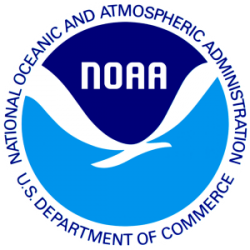
NOAA Fisheries Seeks Comments on Future Reporting Requirements for the American Lobster Fishery
The Atlantic States Marine Fisheries Commission recently approved Addendum XXVI to Amendment 3 of the Interstate Fisheries Management Plan for American Lobster to improve the scope and type of data collected in the lobster fishery in order to improve stock assessments, assess potential impacts of wind farms, and better assess interactions with marine mammals. The addendum includes recommendations to: Require all federal lobster permit holders to report on catches for each fishing trip. Have NOAA Fisheries collect data on where, when, and how long fishermen are fishing. Expand NOAA Fisheries’ offshore biological sampling program. >click to read<17:07
Scandinavian biologists see threat in crossbreeding by American, European lobsters
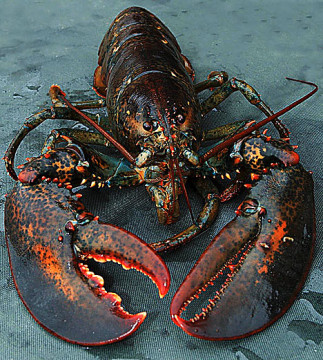 Scandinavian biologists say American and European lobsters are crossbreeding and their offspring can survive in European waters, but it is too early to tell if the hybrids can reproduce. Susanne Eriksson of the University of Gothenberg in Sweden and Ann-Lisbeth Agnalt of the Institute of Marine Research in Norway presented their findings on the threat that American lobsters found in the northeast Atlantic Ocean pose to their smaller European cousins Tuesday during the second day of the International Conference and Workshop on Lobster Biology & Management in Portland.,,, The EU said it might one day explore other protective measures that would not be so disruptive to trade if Sweden returns with further proof of an invasion. click here to read the story 08:38
Scandinavian biologists say American and European lobsters are crossbreeding and their offspring can survive in European waters, but it is too early to tell if the hybrids can reproduce. Susanne Eriksson of the University of Gothenberg in Sweden and Ann-Lisbeth Agnalt of the Institute of Marine Research in Norway presented their findings on the threat that American lobsters found in the northeast Atlantic Ocean pose to their smaller European cousins Tuesday during the second day of the International Conference and Workshop on Lobster Biology & Management in Portland.,,, The EU said it might one day explore other protective measures that would not be so disruptive to trade if Sweden returns with further proof of an invasion. click here to read the story 08:38
EU approves Sweden’s American lobster assessment
 The Swedish risk assessment of American lobster is now approved by the EU, furthering the process that could lead to American lobster being added to the list of invasive species. ‘It is of course positive that our risk assessment meets the requirements of the EU regulation,’ said Sofia Brockmark of the Swedish Agency for Maritime and Water Management (HaV). The regulation aims to prevent, minimise and mitigate the impacts of invasive alien species of animals and nature, human health or the economy. It requires Member States, inter alia, to identify how the species spread and to ensure that the spread is stopped or limited. The species on the list are also subject to various restrictions, including the ban on the import, breeding or keeping alive. Now that the risk assessment has been approved by the EU’s scientific forum for invasive alien species, it can be put forward to the EU’s executive committee. Read the story here 09:03
The Swedish risk assessment of American lobster is now approved by the EU, furthering the process that could lead to American lobster being added to the list of invasive species. ‘It is of course positive that our risk assessment meets the requirements of the EU regulation,’ said Sofia Brockmark of the Swedish Agency for Maritime and Water Management (HaV). The regulation aims to prevent, minimise and mitigate the impacts of invasive alien species of animals and nature, human health or the economy. It requires Member States, inter alia, to identify how the species spread and to ensure that the spread is stopped or limited. The species on the list are also subject to various restrictions, including the ban on the import, breeding or keeping alive. Now that the risk assessment has been approved by the EU’s scientific forum for invasive alien species, it can be put forward to the EU’s executive committee. Read the story here 09:03
Lobster Council of Canada working with European governments to combat threat to live lobster imports
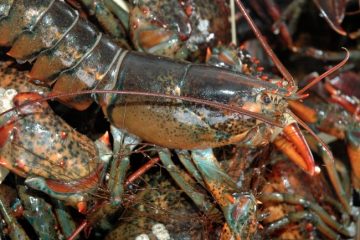 The discovery of several dozen live lobsters in Swedish waters earlier this year is jeopardizing future imports to Europe from North America. In Canada, there is work being done to prevent that move. Geoff Irvine, executive director of the Lobster Council of Canada, says the organization has been working on this issue for months. “We just want everyone to be aware that it is being attacked very aggressively,” he said. The Swedish Agency for Marine and Water Management is spearheading a drive to stop the import of live lobsters from North American exporters. It has asked the European Union to bar these imports. The agency considers the American lobster an alien species in Swedish waters and has satated the lobsters’ presence could introduce new and “very serious diseases and parasites that may affect domestic European lobster and other shellfish.” Read the rest here 10:30
The discovery of several dozen live lobsters in Swedish waters earlier this year is jeopardizing future imports to Europe from North America. In Canada, there is work being done to prevent that move. Geoff Irvine, executive director of the Lobster Council of Canada, says the organization has been working on this issue for months. “We just want everyone to be aware that it is being attacked very aggressively,” he said. The Swedish Agency for Marine and Water Management is spearheading a drive to stop the import of live lobsters from North American exporters. It has asked the European Union to bar these imports. The agency considers the American lobster an alien species in Swedish waters and has satated the lobsters’ presence could introduce new and “very serious diseases and parasites that may affect domestic European lobster and other shellfish.” Read the rest here 10:30
American lobster in high demand in China
 EXPORTS of US lobster to China have rocketed in the past few years, largely to satisfy the appetites of the communist country’s growing middle class, to whom a steamed, whole crustacean – flown in live from the United States – is not just a festive delicacy and a good-luck symbol but also a mark of prosperity. And that’s good news for Maine, far and away the US’ No 1 lobster state, where the boom has put more money in the pockets of lobstermen and kept shippers and processors busy, especially during the usually slack northern midwinter months. Read the rest here 11:52
EXPORTS of US lobster to China have rocketed in the past few years, largely to satisfy the appetites of the communist country’s growing middle class, to whom a steamed, whole crustacean – flown in live from the United States – is not just a festive delicacy and a good-luck symbol but also a mark of prosperity. And that’s good news for Maine, far and away the US’ No 1 lobster state, where the boom has put more money in the pockets of lobstermen and kept shippers and processors busy, especially during the usually slack northern midwinter months. Read the rest here 11:52
American lobster: the new Chinese New Year delicacy – a good-luck symbol but also a mark of prosperity
 Now on the menu in Beijing for Chinese New Year: lots and lots of American lobster. Exports of U.S. lobster to China have rocketed in the past few years, largely to satisfy the appetites of the communist country’s growing middle class, to whom a steamed, whole crustacean — flown in live from the United States — is not just a festive delicacy and . Read the rest here 07:38
Now on the menu in Beijing for Chinese New Year: lots and lots of American lobster. Exports of U.S. lobster to China have rocketed in the past few years, largely to satisfy the appetites of the communist country’s growing middle class, to whom a steamed, whole crustacean — flown in live from the United States — is not just a festive delicacy and . Read the rest here 07:38




































